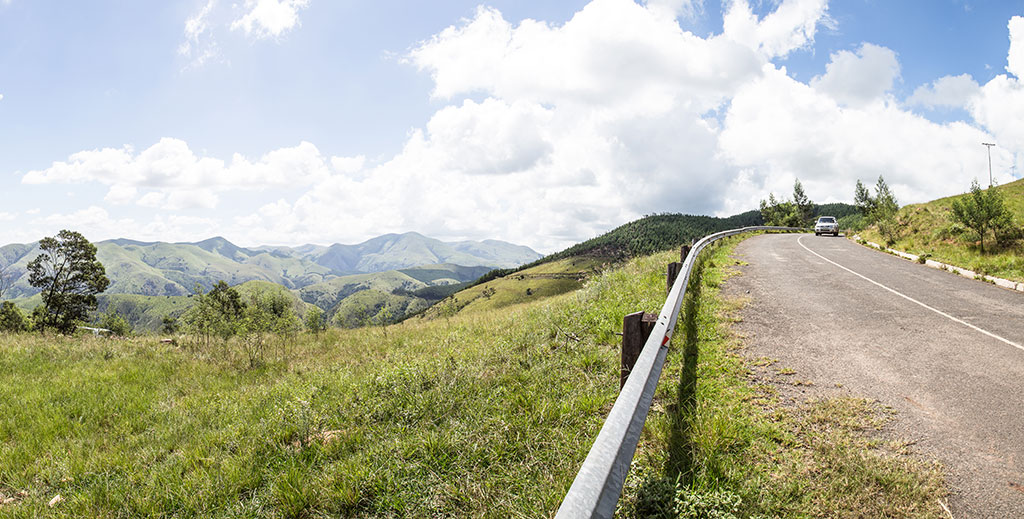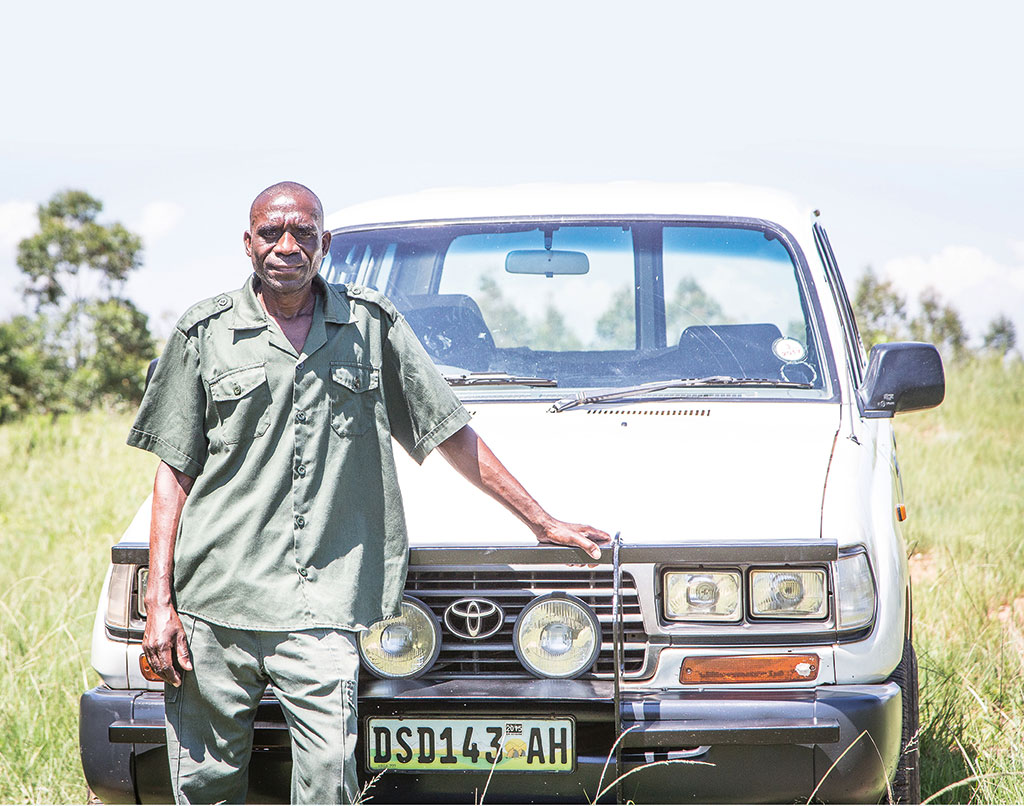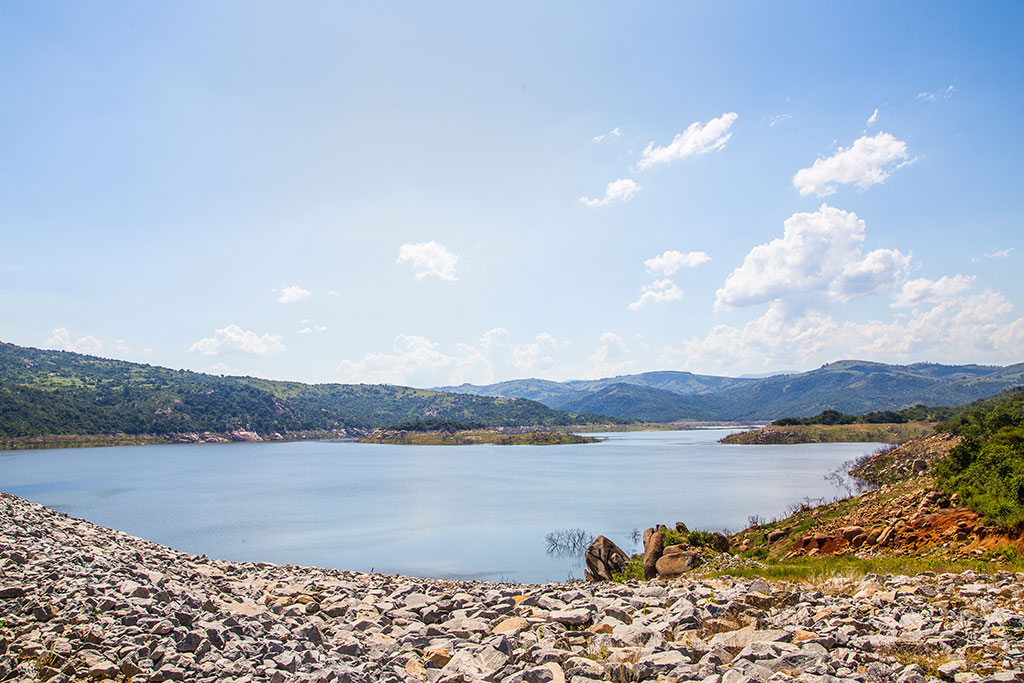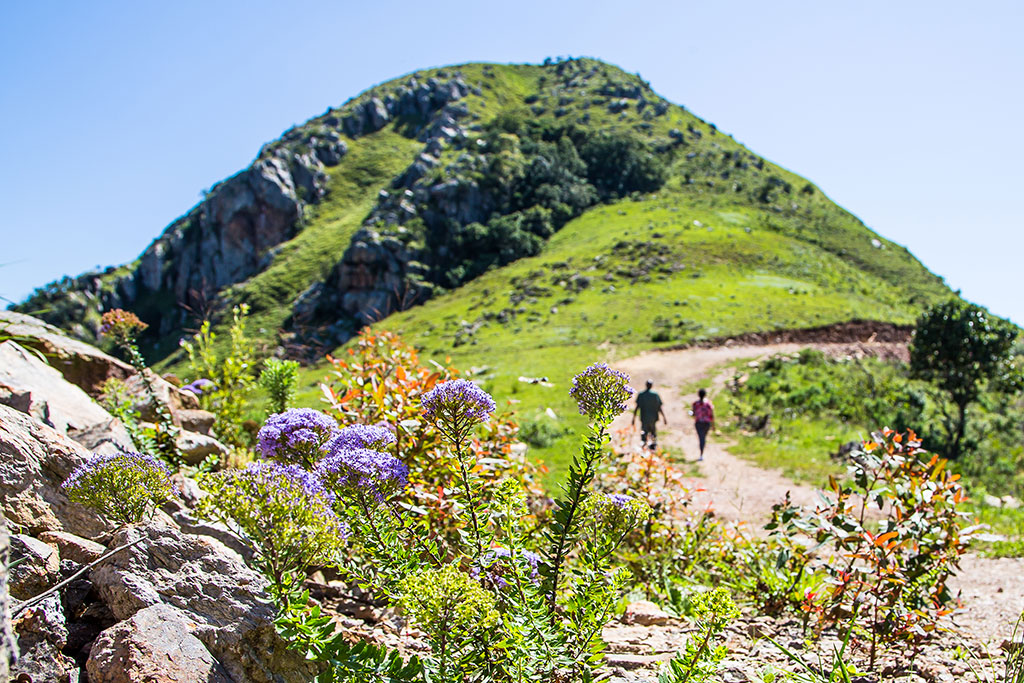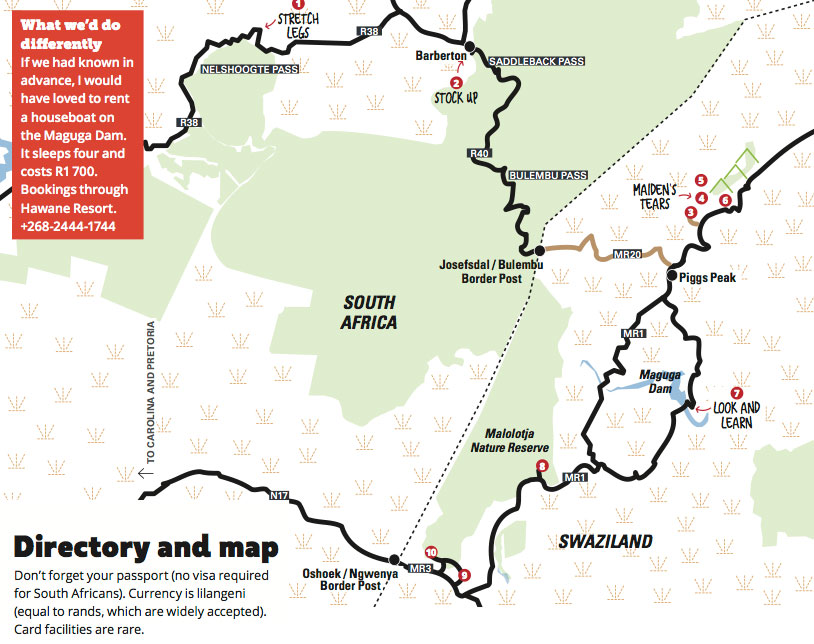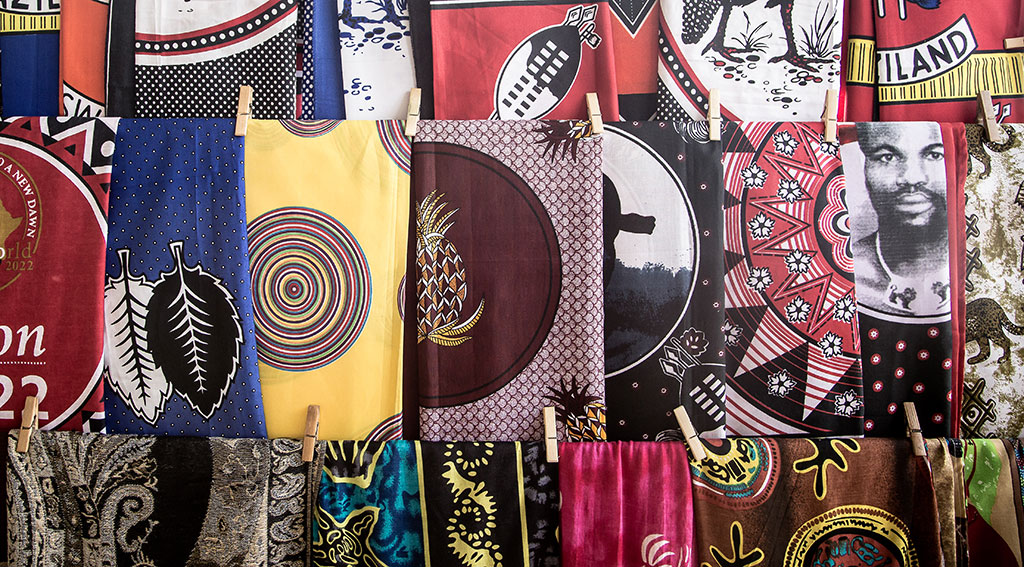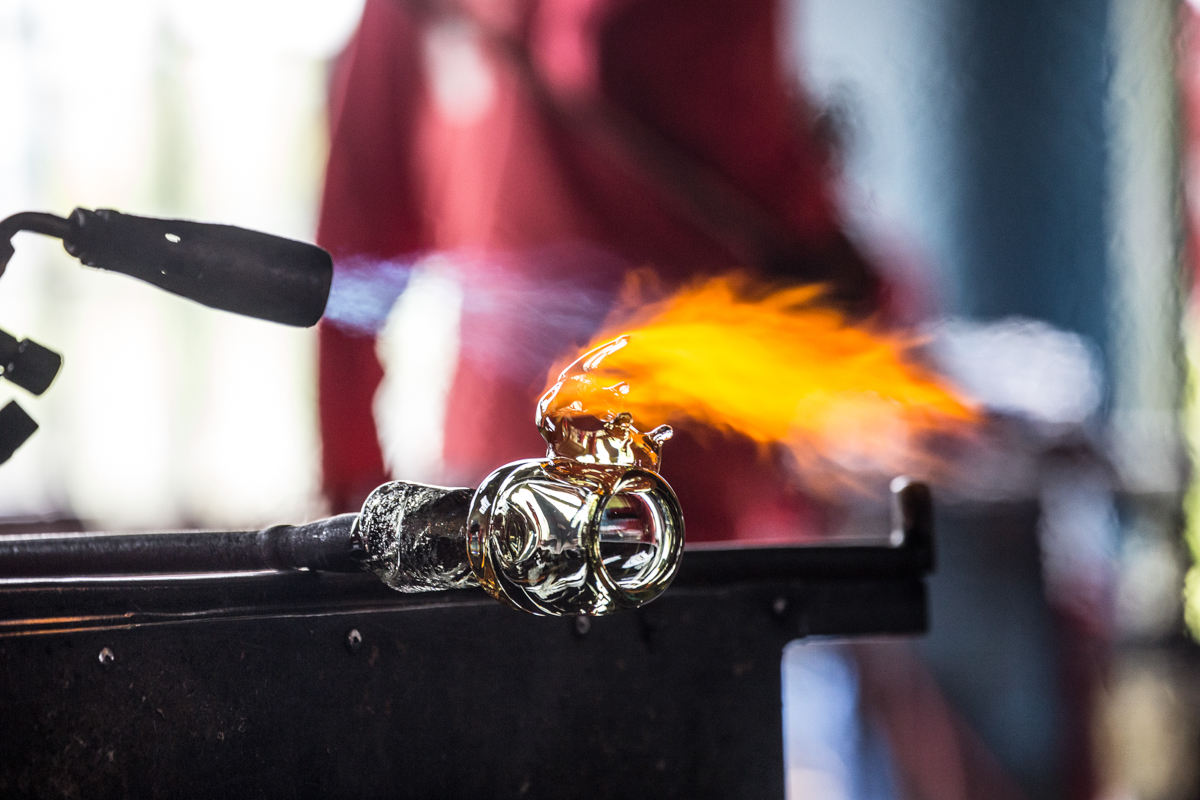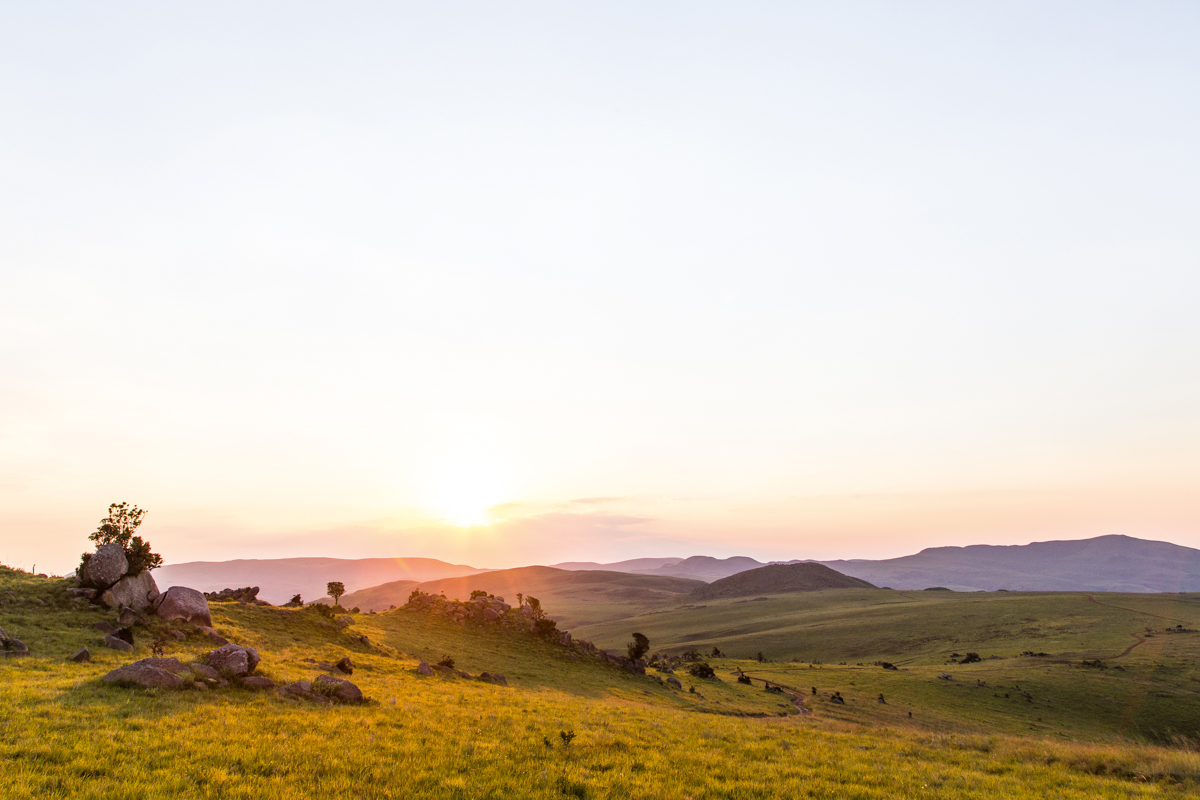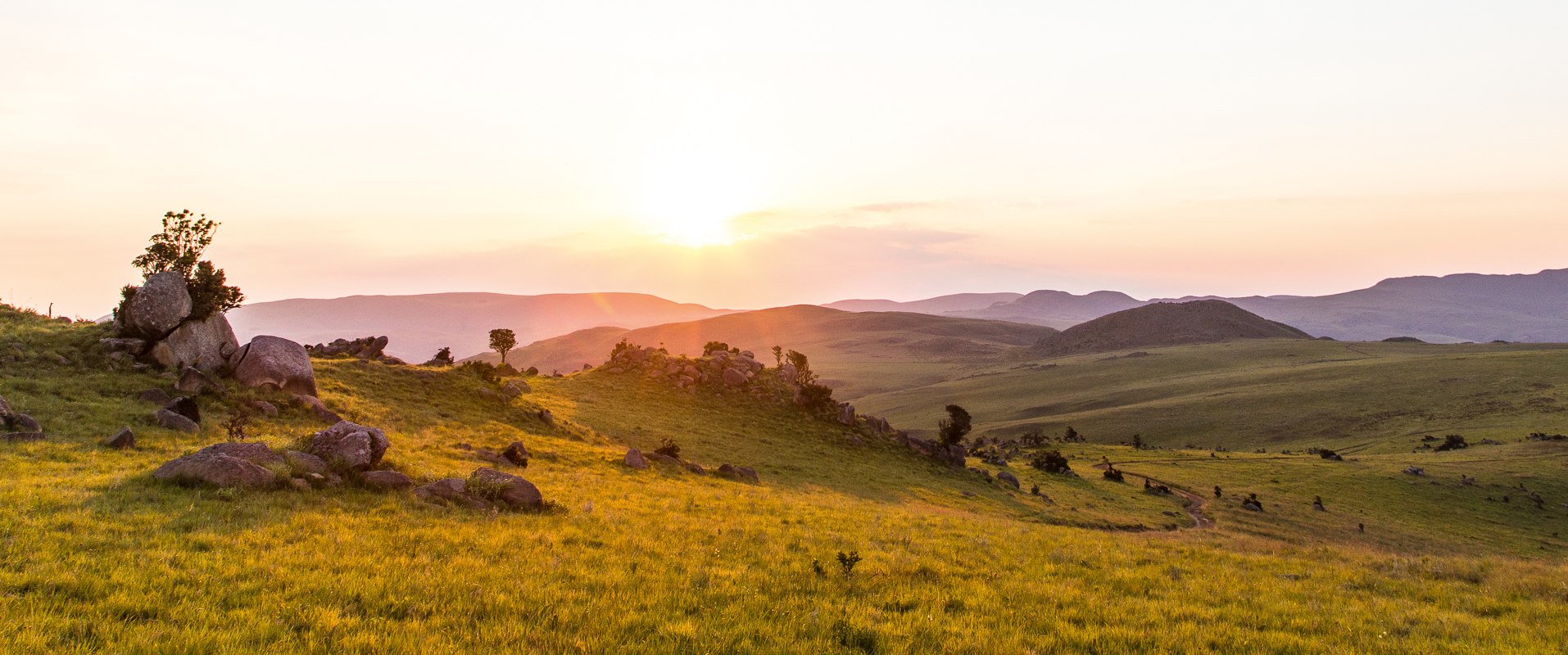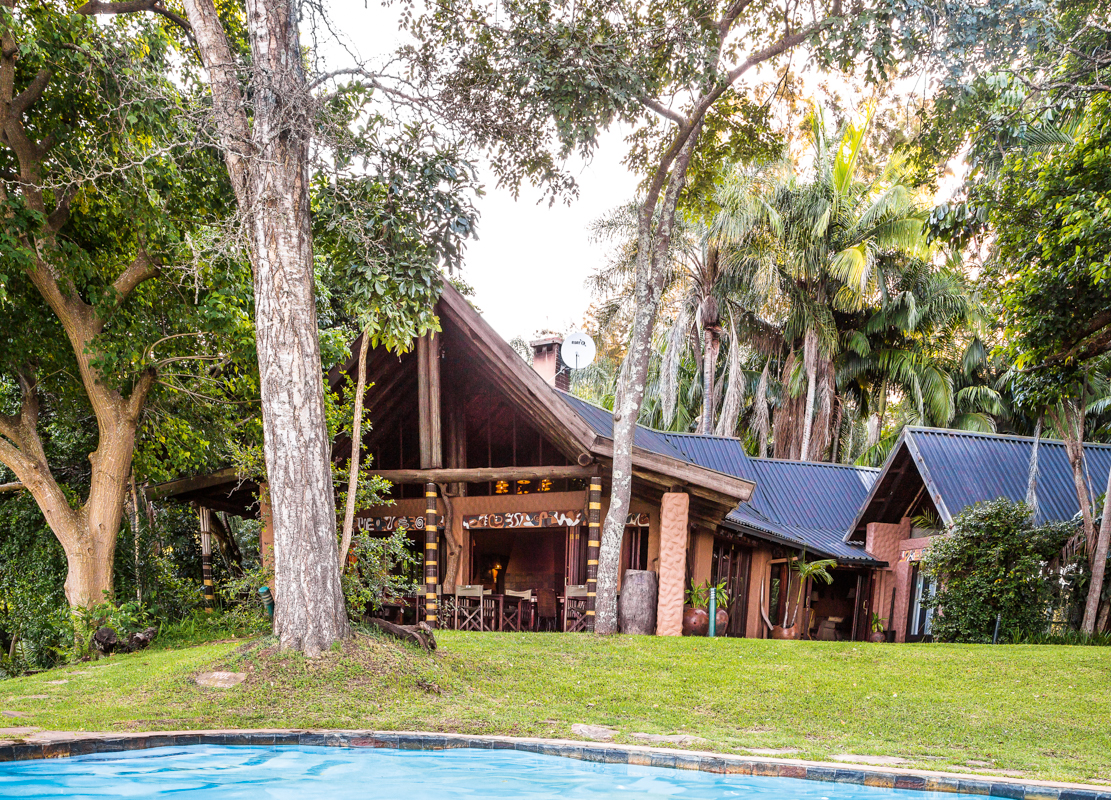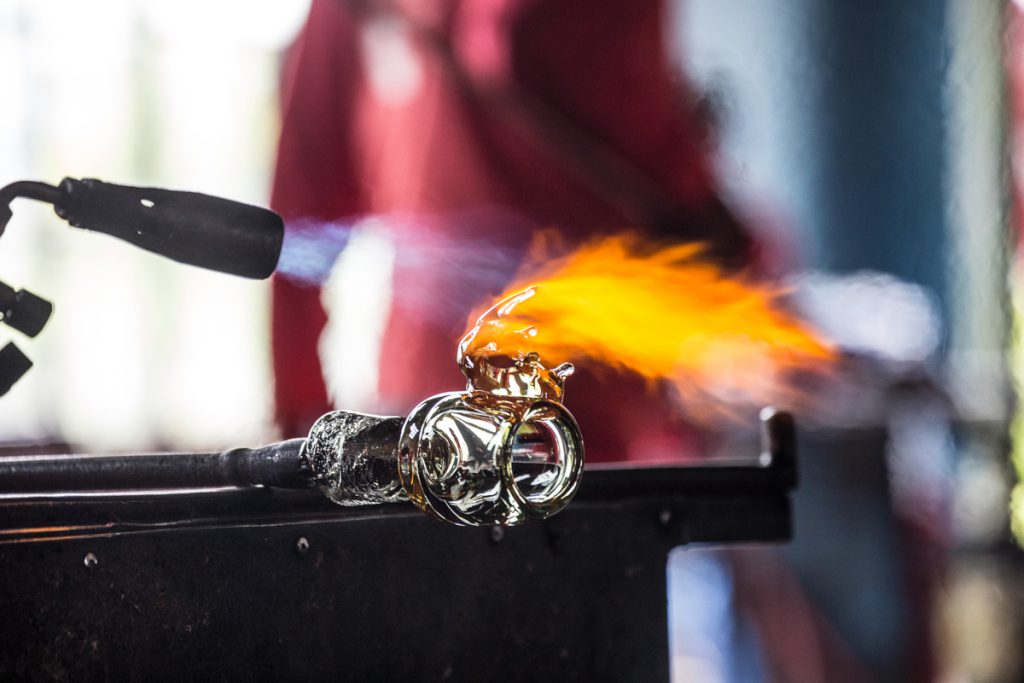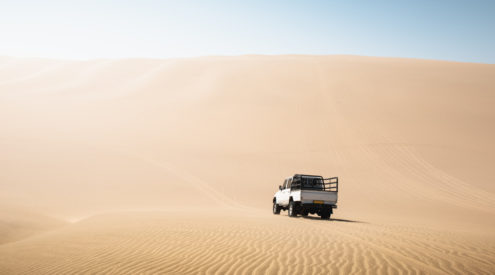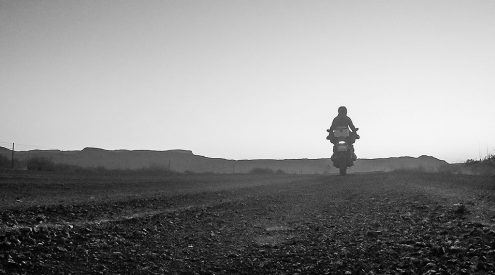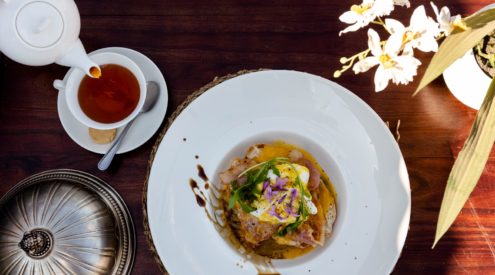It takes seven hours from Pretoria, but this road trip is so pretty it’s worth the time. And then there’s wonderful Swaziland at the end of it.
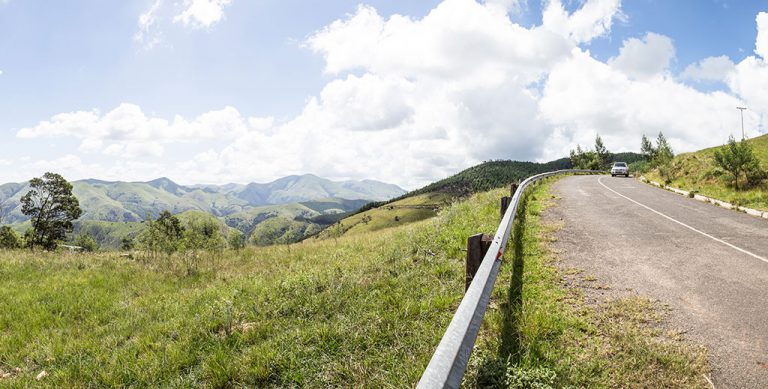
Winding passes along the N4 from Pretoria to Swaziland. Image by Tyson Jopson.
The smell of freshly cut grass hangs in the air as we drive along the N4 past Emalahleni. My colleague, Tyson, and I are on a road trip to Swaziland and I’m in awe of the scale of cultivated land and its different shades of green. Above it, I watch the clouds form different shapes. A six- to seven-hour drive from Pretoria, with a good playlist and winding passes, leads us into Mpumalanga.
With a reputation for being one of the most breathtaking drives, we head along the Genesis Route from Carolina. The potholes are minor and the scenery is spectacular as we cross over the Nelshoogte Pass and into Barberton. After a quick stop for supplies, we continue on the Barberton Makhonjwa Geotrail down to the Josefsdal/Bulembu Border Post. I have always been fascinated by Swaziland and am eager to see what it has to offer.
After a painstakingly slow drive along a badly worn gravel road from the border to the town of Piggs Peak, we arrive at Phophonyane Falls Ecolodge. Our rooms are two beehive huts, the shape of rural Swazi homesteads, and filled with luxuries (there’s even a built-in shower!). The magnificent mountain scenery surrounding us is breathtaking … and then I hear the tranquil sound of the waterfall. As the light fades we enjoy a Sibebe Premium Lager, the country’s flagship beer, on the lodge’s deck with owner Rod de Vletter. He shares stories of his travels and the history of the country, while the beer slides down my throat as if to say, ‘Well done on a successful first day. And welcome to Swaziland.’
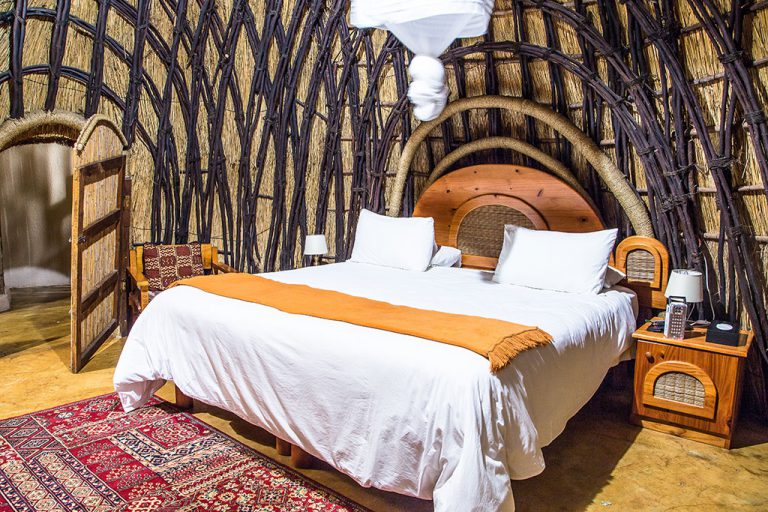
The interior of the rooms at the Phophonyane Falls Ecolodge. Image by Tyson Jopson.
Just before sunrise the next day we explore some of the 600-hectare nature reserve that surrounds the lodge. We start with a walk along one of the trails that lead through the riverine forest beside a stretch of rapids and pools which culminate in an 80-metre-high sloped descent of rushing water: Phophonyane Falls. Legend has it that a Swazi warrior went hunting on the nearby Gobolondo Mountain for a leopard skin for his beloved maiden. He was captured by witches and turned into a white flower. The grieving maiden cried and her tears created the falls. As we wait for the sun to come up, I close my eyes and take in the scent of my surroundings.
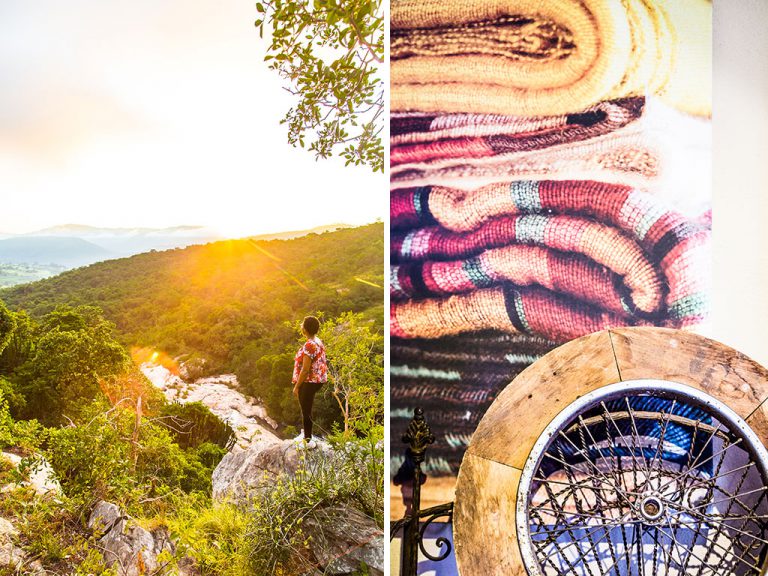
Views of the Phophonyane Falls; The Peak Fine Craft Centre in Piggs Peak started off as a community project. Image by Tyson Jopson.
Back at the lodge, we meet up with Thira Fundzama, who has been a game ranger and guide in Swaziland since 1997. Thira is accustomed to this environment and shares stories of how as a young boy he would run effortlessly up and down these mountains. He takes us on a 4×4 drive through forestry plantations and up to the foot of Gobolondo Mountain. It’s a short but tough hike to the top where you get a 360-degree view of the Makhonjwa Mountains and Bulembu village below.
It’s time to go so we take the dirt road back down to the lodge to say goodbye to Rod and his wife, Lungile, before hitting the tarred MR1 north to Peak Fine Craft Centre. It houses a handful of stores that sell batik items and unique home decor woven from natural fibres. In one of them, I discover the story of Tintsaba Master Weavers. In 1985 its founder, Sheila Freemantle, began a project with 12 local women, teaching them the art of basket weaving as a way to make an income. The project grew and now there are more than 1000 skilled women in the community creating all kinds of fine hand-woven products. We look around the shops and make a speedy retreat just as a bus full of enthusiastic tourists pulls in.
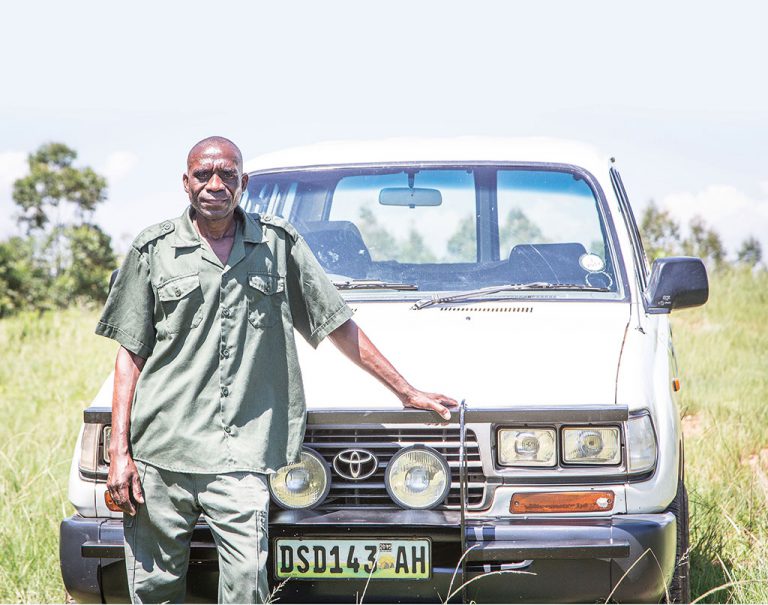
Our Gobolondo guide Thira Fundzama. Image by Tyson Jopson.
We’re back on the MR1 going south, past Piggs Peak again, and about 12 kilometres later take a left onto an unnamed road (look out for the Maguga Dam sign) that takes us to this vast reservoir and lunch at the Maguga View Point Restaurant. Set on a deck high above the valley, it provides astounding views of the 115-metre-high dam wall and Komati River.
In the late afternoon, we head to Malolotja Nature Reserve. With more than 18000 hectares of mountains, grassland, and forests, it’s the largest protected area in the Kingdom. It also has a number of short and overnight hiking trails, the total distance of which is around 200 kilometres, so there’s a lot of wilderness for hikers to enjoy. Blesbok roam freely between the self-catering cabins. As the sun begins to set over the bushveld, we end the day with Tyson giving me a crash course on how to start a fire. All I hear are birds and animals. I take a sip of Sibebe and think, ‘I could live like this.’
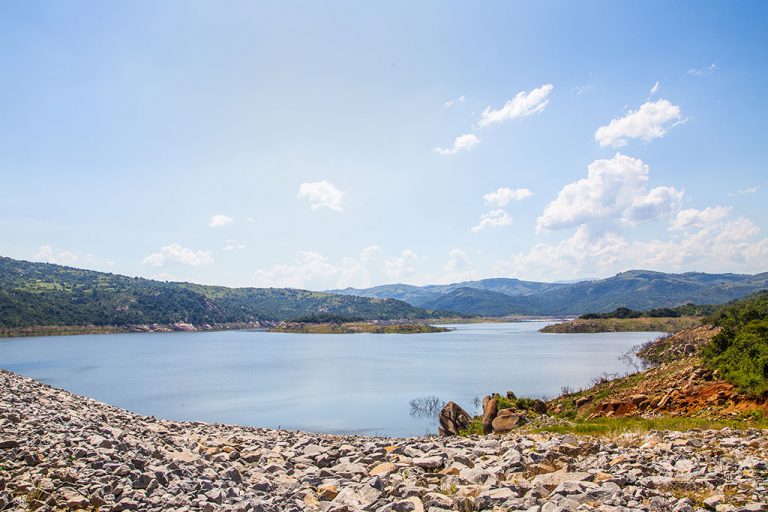
Views of the Maguga Dam. Image by Tyson Jopson.
On day three, I find myself with one eye open at 5am, back at Maguga Dam patiently waiting for the sun to rise so that we can get some good photos. ‘If you see a hippo, look for cover and run for your life!’ Tyson warns. ‘So why are we heading directly towards the dam?’ I say to myself. The sun stays tucked behind the clouds, hesitating to show off the landscape in all its glory. With our appetites worked up and not all that many good photos to show for our early rise, we take the MR1 south again, past Malolotja, to the famous Ngwenya Glass Factory.
We have breakfast at the cafe and then tour the factory to see how the glass is crafted. Sweat trickles down my T-shirt as we walk cautiously between the 1 200 °C chambers. Our guide is Ben Taylor, a glass-blower from England with more than 22 years of experience. He explains how the process, which uses only recycled glass collected from across the country, works. ‘The clear glass is crushed before we place it into the chambers, where we mesh it with [already] melted glass. Any leftover glass is turned back into sand.’ The glass-blowing process is fascinating to watch as workers use special techniques to shape each glob of molten glass.
After the tour, we head up the road to see one of the world’s oldest known mines. At the gate of the Ngwenya Iron Ore Mine and Lion Cavern, we meet our guide, Mpendulo Gumede. He tells us about the Lion Cavern and how it was used by the San, who extracted the soft haematite ore from the rocks 43 000 years ago. He also tells us about the large open-cast mine in front of us; it was prospected in 1957 and then mined by Anglo-Americans until 1979.
The ore was transported by railway to Mozambique and then shipped to Japan. Mpendulo also tells us how two other ancient mines were destroyed because of it. At Lion Cavern he takes some of the dark haematite off the cavern wall and applies it to my hand. A shiny purple-grey shimmer appears on my skin. Far below Lion Cavern is a sacred pool where locals come to collect rainwater. They believe it has spiritual powers and healing properties, due to a resident seven-headed snake.
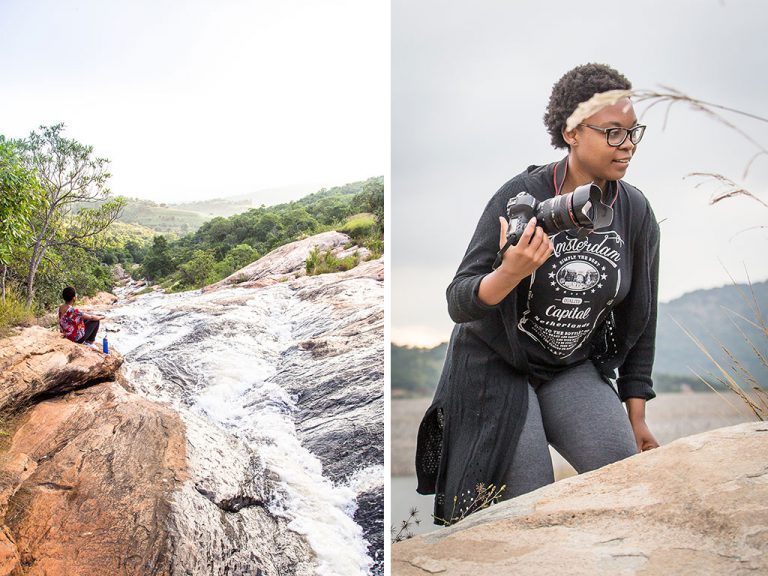
The tale of a grieving maiden who cried after her Swazi warrior died, with her tears filling up the Phophonyane Falls; tackling a few giant rocks alongside Maguga Dam. Image by Tyson Jopson.
The following day it’s time to head home, and I’m reminded to look up a quote by Pico Iyer. He describes how we travel first to lose ourselves and then subsequently to find ourselves. ‘And we travel, in essence, to become young fools again – to slow time down and get taken in, and fall in love once more.’ This trip has turned me into a young fool again. I’ve fallen in love with Swazi history and culture, and the vegetation reminds me of the rural Eastern Cape. There’s simplicity in the way locals live and a sense of contentment with what they have. I may be as small as Swaziland is to the world, but this tiny country with a big heart reminds me of who I am: an African, yearning to know more about what the world has to offer.
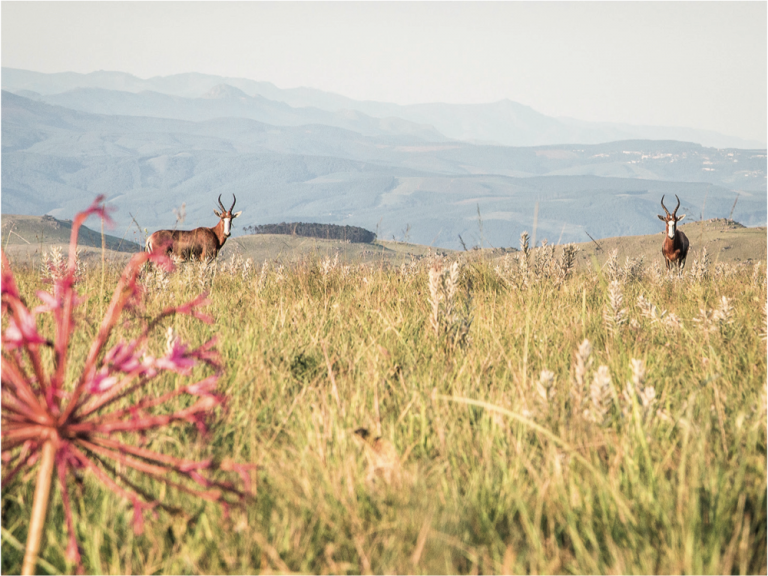
Blesbok posing elegantly at Malolotja. Photo by Tyson Jopson.
How to see Swaziland in a weekend
Day 1: Pretoria to Phophonyane
Distance 403 kilometres Allow 7 hours
Take the N4 past Middelburg. 10 kilometres after the Alzu Petroport, turn right at the R33 sign for Carolina. Take the R38 (Genesis Route) out of Carolina. Stop for a break at the top of Nelshoogte Pass (1). At the T-junction turn right to stay on the R38 and stock up on supplies in Barberton (2). Take the R40 onto the beautiful Barberton Makhonjwa Geotrail which winds down to the Josefsdal/Bulembu border post (8am – 4 pm, R50 a car). The MR20 from here to Piggs Peak is gravel, in terrible condition but doable in a sedan if it’s dry. At Piggs Peak, take the MR1 north and look for signs to Phophonyane Falls Ecolodge (3).
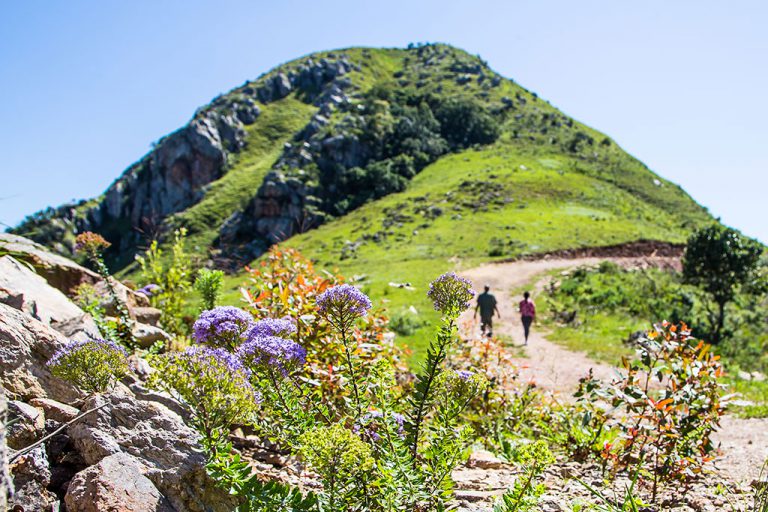
From the top of the Gobolondo Mountain you can see amazing views all the way to Phophonyane Ecolodge. Image by Tyson Jopson.
Day 2: Phophonyane to Malolotja
Distance 54 kilometres Allow 4 hours
Walk to the falls (4) for sunrise (it’s worth it!). After brekkie, take a guided 4×4 trip to the foot of Gobolodo Mountain (5) and hike up. Take the dirt road out of Phophonyane and turn left onto the tar MR1. It’s less than 2 kilometres to Peak Fine Craft Centre (6). Double back on the MR1 and about 2 kilometres after Piggs Peak, turn left to Maguga Dam. Have lunch here (7). Continue south until you’re back on the MR1. From there it’s less than 7 kilometres to Malolotja (8).
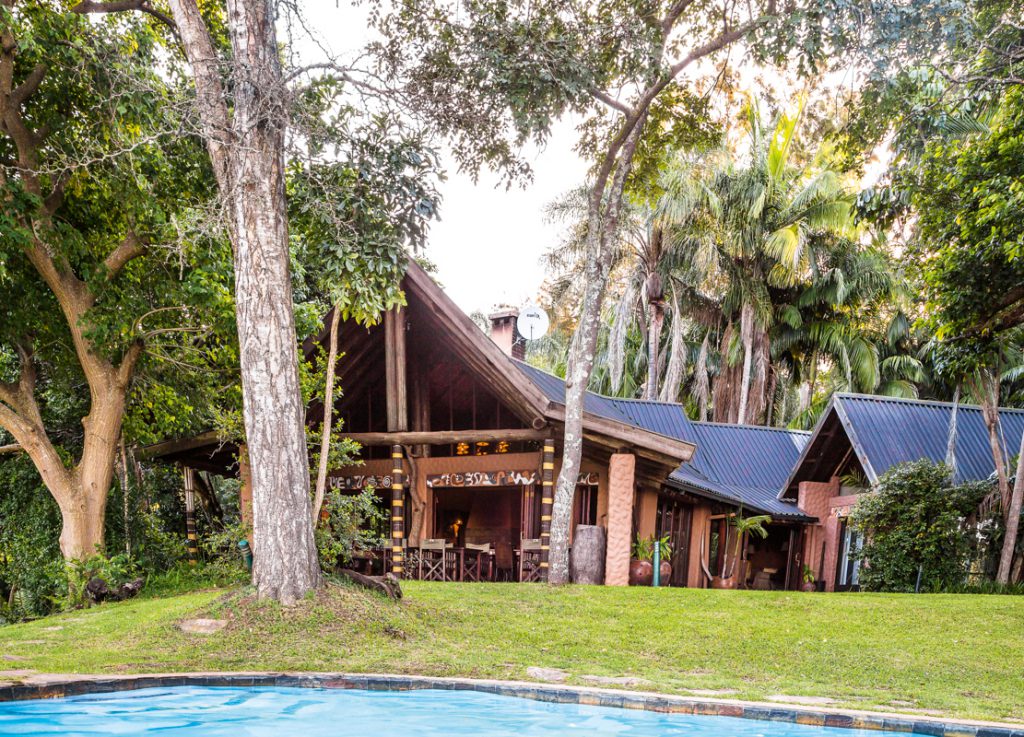
The restaurant at Phophonyane Falls Ecolodge serves deliciously spicy Swazi chicken. Image by Tyson Jopson.
Day 3: Malolotja back to Pretoria
Distance 350 kilometres Allow 7 hours
Take the MR1 south and merge onto the MR3. Take turn-off No. 3 to Ngwenya Village, right under the highway, and then follow the road (it curves left and then runs parallel to the MR3) to the glass factory (9). After a bite and a scorching hot tour, drive about 3 kilometres up the same road to the entrance to Ngwenya Iron Ore Mine (10). Double back, take the first right that gets you back to the MR3, and make the short dash to Oshoek/Ngwenya border post (7am – 10pm). From there it’s about 100km back to Carolina on the N17 and R33, and another 200 kilometres back to Pretoria the same way you came.
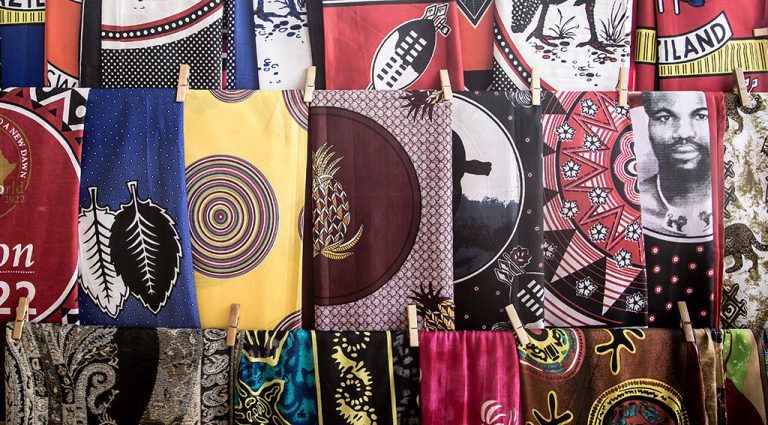
Fabrics on display at Ngwenya Glass Factory. Image by Tyson Jopson.
Directory
1. Nelshoogte Pass There’s a beautiful view at the top of this pass. Even better ones of the Saddleback Mountains await after Barberton, but this is a good place to stretch after a long first leg.
2. Jock of the Bushveld Shopping Centre Grab self-catering supplies at the Pick n Pay before crossing the border. Piggs Peak has a supermarket but you’ll find a better selection here.
3. Phophonyane Falls Ecolodge A beautiful, lush forest setting with winding footpaths, a pool, viewing deck, and superb restaurant with food by local chefs (try the Swazi chicken, R121). Accommodation ranges from safari tents (R500 per person) to luxury beehive huts (R1360 per person), breakfast included. Tel +26824313429
4. Peak Fine Craft Centre You can purchase batik fabric, hand-woven goods, and jewellery from the different shops here.
5. Maguga View Point Restaurant The food is unremarkable(burgers from R50) but there’s a great view. If you have time, stay for the short video on the building of the dam wall.
6. Malolotja Nature Reserve Possibly Swaziland’s most beautiful nature reserve. Walking trails of various lengths take you into the heart of this mountainous region. Look out for stunning cycads and plains games such as wildebeest, blesbok, and eland. The 10 self-catering cabins sleep five each. They are basic and, alas, a little neglected. Braaiing is your best dinner option.
7. Ngwenya Glass Factory Watch master glass-blowers at work and have coffee and breakfast at the cafe.
8. Ngwenya Iron Ore Mine and Lion Cavern Take a guided tour of the oldest and a more recent mine.









